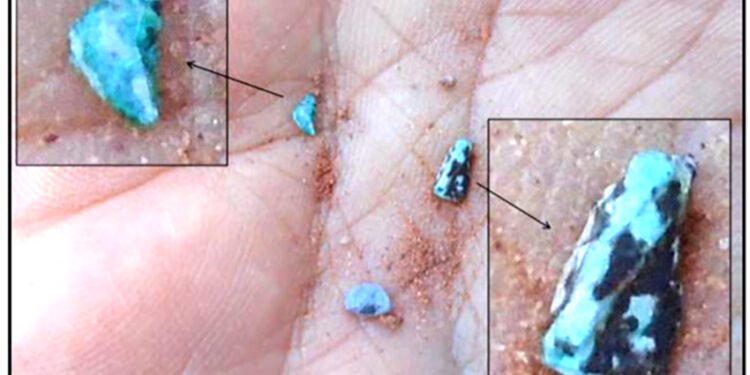Giga Metals Corp. (TSXV: GIGA) (OTCQX: HNCKF) has commenced a first phase reconnaissance drilling programme to test the potential of a series of priority targets generated during 2021 at its Sedimentary-hosted Copper Exploration Project, in the state of Piaui, Brazil.
The drill targets on the 16,858-hectare Corrente Property to be tested by this initial program are defined by:
- copper mineralisation intersected by five historical well boreholes (BH-A to E) within sequences of the prospective clastic and carbonate rocks of the Cambrian Araçá Basin;
- anomalous copper and associated pathfinder element results (Ag, Ba, Co, In, Sb and Tl) in contiguous stream sediment samples; and,
- association or coincidence with larger regional faults which are expressed as regional lineaments and are evident in the regional magnetic data.
“Our initial programme will be 10 holes with a roto-percussive drill at an average planned hole depth of 150 meters at an approximate spacing of 500m to 1000m,” said CEO, Mark Jarvis.
“These boreholes aim to demonstrate the presence of copper mineralization associated with the targeted prospective stratigraphy at relatively shallow depth and interpreted ‘feeder structures’ believed to be associated or coincident with larger regional faults.”
The geological setting is reminiscent of well-known sediment-copper mineralization occurrences around the world including less metamorphosed portions of the Central African Copper Belt and the Kupferschiefer (copper shale), the latter currently mined by KGHM in Poland, and known to extend for hundreds of kilometres across northern continental Europe as a narrow sub-unit up to two metres thick within the Southern Permian Basin.
Reconnaissance field work undertaken by Exploration Outcomes Ltda. of Sao Paulo on behalf of GIGA has revealed evidence of both oxide and sulphide sediment-hosted copper mineralisation in historical drill cuttings from five widely spaced groundwater wells examined across the Corrente Property.
Non-representative grab samples from abandoned historical borehole cuttings comprised of brown and light green siltstone and calci-siltstone with malachite fracture coatings produced values up to 0.58% copper and 0.31% Cu.
Roto-percussive borehole testing to 150 metre depths is being employed by GIGA as an economical means to penetrate the overlying lower sequences of the Parnaiba Basin rocks and sample the copper enriched upper siltstone units of the Cambrian Araçá Basin. Southern Piauí state is remote and semi-arid region of Brazil where access away from town centers is limited.
Neither the Araçá Basin rocks, nor the sediment-hosted copper occurrences associated with them are well studied or explored. The near flat-lying sedimentary rocks of both the Parnaiba Basin and more local Araçá Basin further hinder prospecting in the region where sedimentary profiles are not well exposed.
Geochemical stream sediment samples were collected at 114 sites within the Rio Corrente drainage basin ranging from 2.5 to 32.9 parts per million (ppm) copper. Anomalous results occurred in clusters ranging between 10.1 ppm copper and 32.9 ppm copper (23 sites). Regionally, values ranged from 2.2 ppm copper to 89.9 ppm copper (149 samples total).
For further information please visit: https://gigametals.com/












